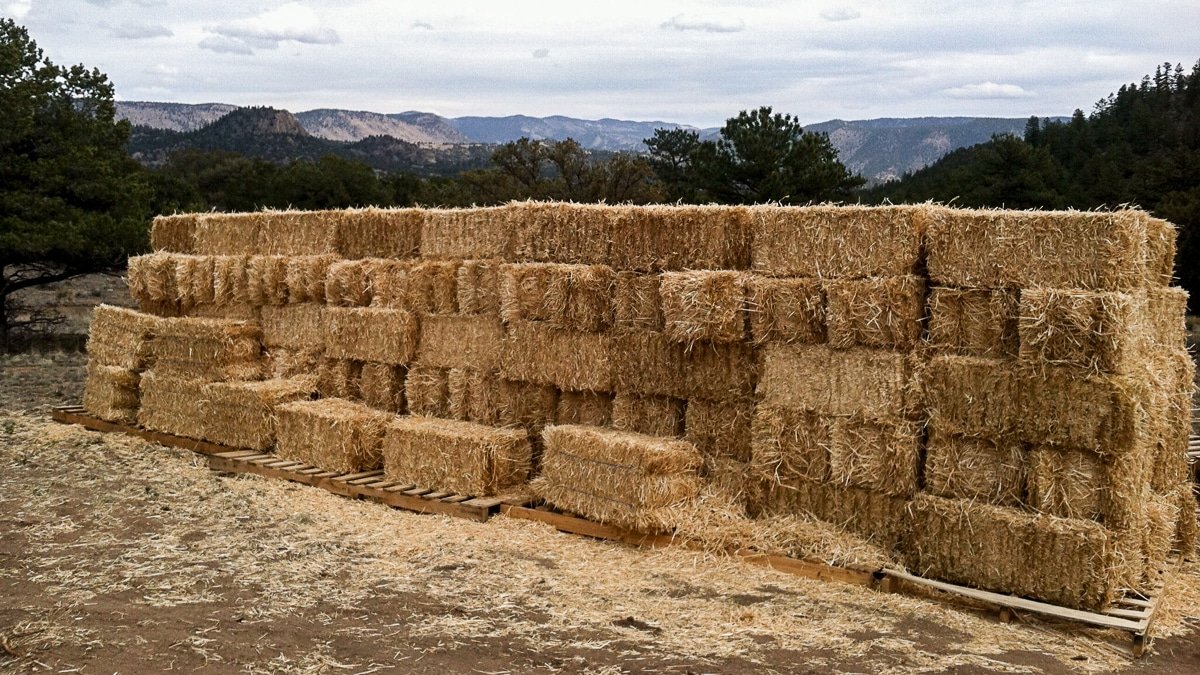Hay Houses Are NOT Straw Bale Houses
Why the Distinction Between Hay Houses and Straw Bale Houses Really Matters
At first glance, hay houses and straw bale houses might sound like the same thing. After all, both involve bales, right?
But in reality, using hay instead of straw in natural building isn’t just a misnomer—it’s a fundamental misunderstanding that can compromise your entire project.
Let’s clear it up once and for all: hay and straw are not interchangeable, especially when it comes to construction.
📩 The Question That Sparked This Blog
This all started with a great question from a reader, Josh, who wrote:
"I'm sorry to ask such a simple question but I would really appreciate it if you would explain why exactly you cannot use hay to build with. I have ready access to a LOT of hay that is the same price or cheaper than straw in my area."
Josh—thank you. You’re not alone. Plenty of people (even the pros slip up from time to time!) still refer to “hay bale houses” without realizing the issues. Here’s the breakdown.
🌾 What’s the Difference Between Hay and Straw?
HayPurpose: Food for animals
Moisture Content: High (live plant)
Includes Seeds? Yes
Risk of Rot/Mold? High
Attracts Pests? Yes (edible)
StrawPurpose: Byproduct of grain harvest
Moisture Content: Low (dead stalks)
Includes Seeds? No
Risk of Rot/Mold? Low
Attracts Pests? No
1. Hay Is a Food Source—Straw Is Not
Hay is harvested while the plant is still alive and full of nutrients, making it ideal for feeding livestock. Straw, on the other hand, is the dried stalk left behind after grain is harvested—it has no nutritional value and is therefore not edible.
Do you want to build your home out of something animals want to eat? I didn’t think so.
2. Hay Holds More Moisture
Because hay is cut while still green, it retains significant internal moisture. That moisture can lead to:
🔥 Spontaneous combustion from decomposition
💦 Mold and rot when sealed in a wall system
🛑 Structural instability over time
Straw is cut after the plant has dried in the field. Bales typically contain 8–9% moisture—well below the danger zone for decay or fire risk.
3. Hay Bales Can Contain Seeds (and Problems)
Another hidden issue? Hay bales often contain seeds, which can sprout inside your walls if there’s any moisture present.
Yes—your walls can start growing grass.
This may sound funny, but it invites bigger issues:
Mice, insects, even livestock might be drawn to the organic material
Seed growth compromises plaster and structural integrity
Decomposing organics inside a wall = long-term damage
🧱 Why Straw is the Right Material for Natural Building
🌾 Non-nutritive: Not a food source
🔥 Fire-safe: Low moisture content
🛠 Structurally stable when used properly
✅ Proven track record in successful homes, schools, and community centers worldwide
As the California Straw Building Association once said: “Hay is for Horses. Straw is for Houses.” We couldn’t said it better ourselves.
🏠 Want to Learn More About Building with Straw Bale?
If you're serious about sustainable building, start with the right material and the right training. Join our FREE 16-Day Straw Bale eCourse and learn how to design, source, and build a safe, beautiful straw bale home—no hay bales in sight.

